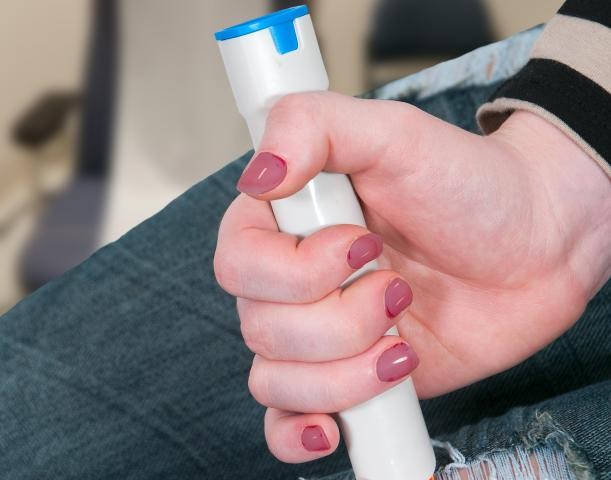A rare and severe allergic reaction, anaphylactic shock is a condition that can prove lethal if it goes untreated or isn’t treated well. It is caused mostly due to allergy of insect bites, food or certain medications.
The two terms “anaphylaxis” and “anaphylactic shock” are often used to depict the same meaning. Both of these refer to a severe allergic reaction. The anaphylactic shock occurs when your blood pressure goes so low that your cells and body organs do not get sufficient oxygen. The anaphylactic shock is a shock that is caused due to anaphylaxis.
In case of an emergency, a shot of a drug called epinephrine needs to be administered immediately.
Here are the symptoms, typical triggers/causes, preventions and treatments of anaphylactic shock.
Signs & Symptoms

Most commonly, the first symptoms appear within 15 minutes of coming into contact with allergens that you are affected by. At the start, they may be mild such as runny nose or uneasiness. But they can aggravate pretty quickly.
Some of the common symptoms include:
-
Vomiting
-
Rapid heartbeat
-
Hives
-
Fainting
-
Difficulty in breathing
-
Swelling of your mouth
-
Tight feeling in the throat
-
Dizziness
In severe cases, the sufferers collapse or stop breathing and may even lose consciousness in a matter of just few minutes.
What Most Commonly Triggers Or Causes Anaphylactic Reaction?
The most common causes or triggers of an anaphylactic reaction are:
-
Insect stings
-
Foods, nuts and shellfish in particular
-
Medications, including penicillin and aspirin
-
Latex that is found in several syringes, disposable gloves, and adhesive tape
In most cases, you need to come into contact with a trigger more than once before developing severe allergy to it. So let your doctor know if your throat felt scratchy when you had shrimp or you got a bee sting and that spot became swollen. The doctor may suggest you to keep a medicine handy if you have a severe reaction the next time.
A mild allergic reaction could even result in more serious allergic reactions in near future. Speak with your allergist or primary care doctor if you should be keeping a shot of epinephrine with you all the time or not.
How Can You Prevent Anaphylactic Shock?

Well, the best preventive measure for anaphylactic shock is avoiding your triggers. As you may be unable to do that every time, just make sure that you have a plan to identify and treat its symptoms immediately. Your primary care doctor or allergist can help you in this regard.
If you are not able to talk about your allergy to people, wear a medical alert bracelet to make people aware of your allergy. Let your friends and family know that they can help you in an emergency. Just make sure they know about:
-
What your allergy triggers are
-
What are the signs and symptoms of an anaphylactic reaction
-
Where do you keep your epinephrine and how to administer you a shot
-
When to dial emergency number
Treatments

At the event of anaphylactic shock, you immediately need a shot of epinephrine in your thigh. Also call the emergency number to as you are at the risk of a second reaction (called a biphasic reaction) within 12 hours. In the emergency room, the doctors can watch over your symptoms and treat you when you have a second reaction.
The emergency room doctors can save your life if you do not have epinephrine. They will put a shot of epinephrine beneath your skin or in a vein or muscle. Generally, it brings your low blood pressure back to normal. You will also be given steroids, fluids, and antihistamines through a tube connected with one of your veins until your symptoms go away.
The other possible treatments are breathing tubes and medications to allow you to breathe better. A corticosteroid (a powerful anti-inflammatory drug) can prevent symptoms from coming back hours later.
Image Source:
1) cncenter
2) drlenoir
3) twimg

